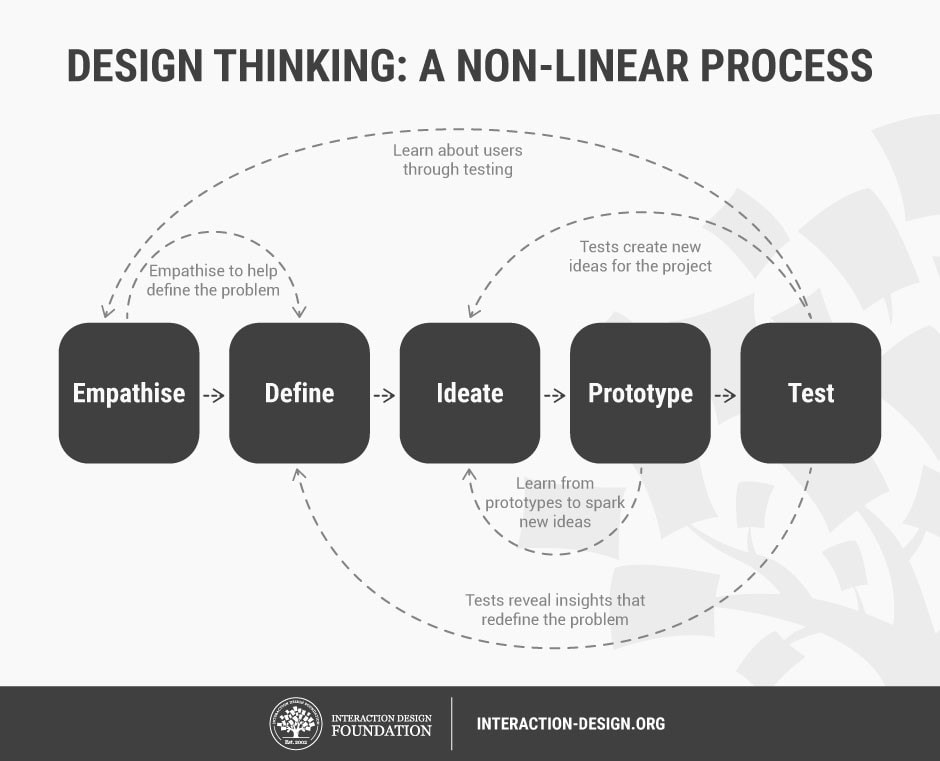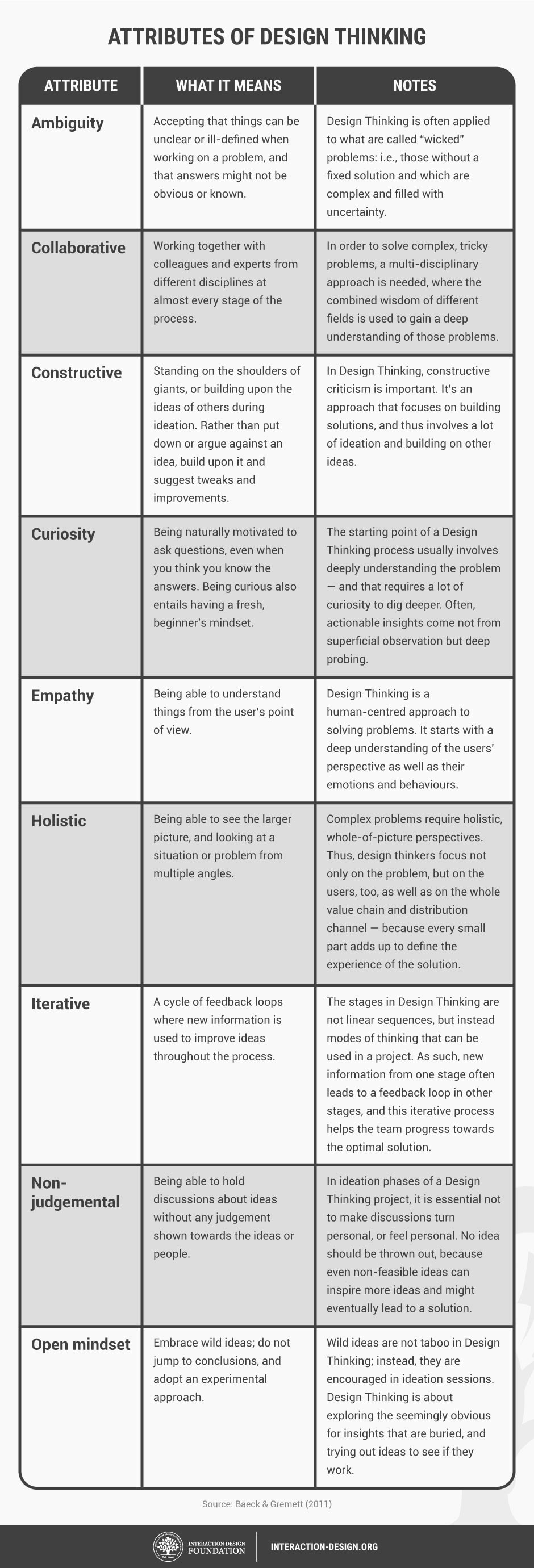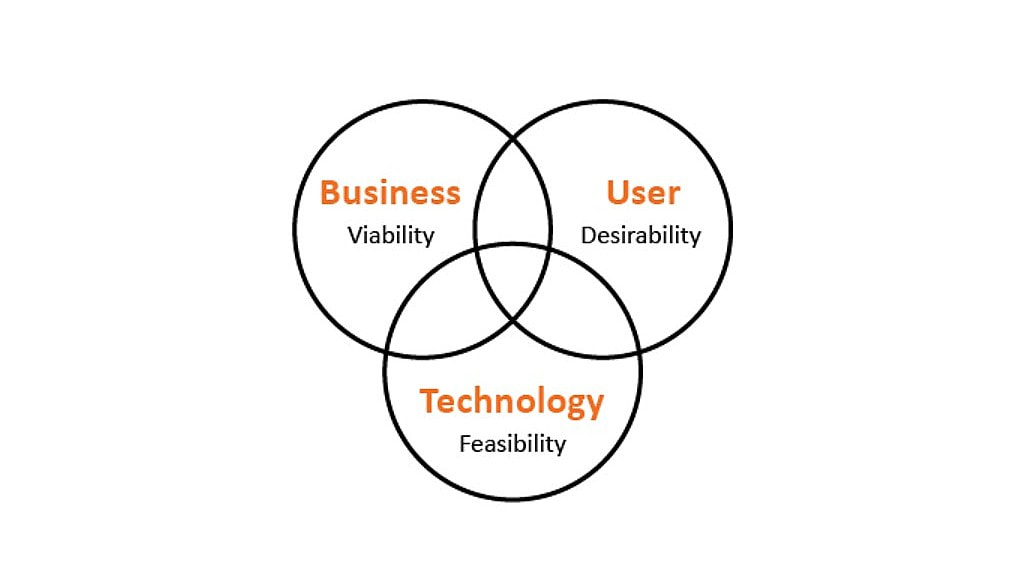CHARACTERISTICS OF GOOD SOLUTIONS
What the goals are?
In design thinking, these characteristics of a good solution apply, no matter what your particular situation or set of users. A good solution:
What the goals are?
In design thinking, these characteristics of a good solution apply, no matter what your particular situation or set of users. A good solution:
- Has a purpose: You always start with a problem that needs solving and you arrive at the solution using the design thinking process. You are not using design thinking to figure out who may benefit from solution you already have. In other words, design thinking isn't meant to work backward from solution to problem.
- Is useful: The solution fulfills its intended purpose.
- Is understandable: A good solution should be easy to understand or learn. Or, the work to learn the solution should be worth the effort.
- Is honest: A good solution does not promise more than it provides.
- Is sustainable: A good solution does not adversely affect the environment, nor does it require resources (whether material or personnel) in a way that can't be maintained over time.
- Is long-lasting: Make sure the work you put into the design thinking process is worth it. Provide a solution that does not break often or deteriorate quickly.
- Fits to the context: A good solution makes sense for the location it is used in, the people who use it, and the function it was meant to perform.
- Is compelling: It should resonate with the user by making them feel confident when they use it. They should want to use your solution.
- Is simple: The solution should include only those elements necessary for fulfilling the rest of the criteria in this list.
| | | |
7 fundamental principles of design
In the book The Design of Everyday Things, Don Norman lists the following as the 7 principles of design:
In the book The Design of Everyday Things, Don Norman lists the following as the 7 principles of design:
- Discoverability It is possible to determine what actions are possible and the current state of the device.
- Feedback There is full and continuous information about the results of actions and the current state of the product or service. After an action has been executed, it is easy to determine the new state.
- Conceptual Model The design projects all the information needed to create a good conceptual model of the system, leading to understanding and a feeling of control. The conceptual model enhances both discoverability and evaluation of results.
- Affordances The proper affordances exist to make the desired actions possible.
- Signifiers Effective use of signifiers ensures discoverability and that the feedback is well communicated and intelligible.
- Mappings The relationship between controls and their actions follows the principles of good mapping, enhanced as much as possible through spatial layout and temporal contiguity.
- Constraints Providing physical, logical, semantic, and cultural constraints guides actions and eases interpretation.
Qualities Needed in Design Thinking
CREATING A DESIGN BRIEFYour goal for the research stage should be to emerge with a clear problem definition. Some companies ask their design teams to create a design brief.
A design brief is a document that summarizes all user requirements following an extensive research stage and provides a thorough description of the problem the team is being asked to solve. Design briefs are useful for team members and stakeholders and can be adjusted over the life of the project to reflect new understandings.
Design briefs generally contain the following elements...
The brief is often used as a set of criteria to evaluate solutions as they are being developed. It can also be used after a solution is achieved to determine how the project met schedule, budget, and other expectations.
Whether you create a design brief or not, you should at least have multiple sources of data for each of the bulleted items in the list we shared above.
Strong research provides support for the important work to come. The reframing of the problem definition and creation of the design brief is critical, as it directs the next stage of teamwork, ideation and synthesis. Ideation that is based on an inaccurate or misleading problem definition will result in solution choices that are not in line with stakeholders' interests. Join us next week to learn about the ideation stage.
A design brief is a document that summarizes all user requirements following an extensive research stage and provides a thorough description of the problem the team is being asked to solve. Design briefs are useful for team members and stakeholders and can be adjusted over the life of the project to reflect new understandings.
Design briefs generally contain the following elements...
- A summary of the research that includes, but is not limited to:
- User characteristics
- User needs and desires
- User context
- Any user personas that you have developed
- Technology possibilities and feasibility
- Business options and viability
- Inspirational and competitive benchmarking
- A reframed problem definition
- The scope and deliverables of the project, including:
- Requirements for functionality, aesthetics, and what will be appealing to users
- Project timeline
- Budget
- Other business requirements, such as existing or future product-line needs
The brief is often used as a set of criteria to evaluate solutions as they are being developed. It can also be used after a solution is achieved to determine how the project met schedule, budget, and other expectations.
Whether you create a design brief or not, you should at least have multiple sources of data for each of the bulleted items in the list we shared above.
Strong research provides support for the important work to come. The reframing of the problem definition and creation of the design brief is critical, as it directs the next stage of teamwork, ideation and synthesis. Ideation that is based on an inaccurate or misleading problem definition will result in solution choices that are not in line with stakeholders' interests. Join us next week to learn about the ideation stage.
Concepts need to always fit at least 2 of these circles. Ideally, they should be in a balance in all three areas of this Venn diagram.
6 Tips for Prototyping a Service
1. Identify the steps that matter
What are the most important milestones in the journey? It’s not realistic to make a series of moves and be always right at everything all the time, so it’s critical to identify those points in the project (or product) to focus on and nail it. This a good method to stay on target and keep priorities in the right order of importance. How to pinpoint the elements that matter?
- Understand and Empathize on what’s important to the End-Users, in the daily use of the product or service.
- Simulate real situations or spend time and observe users while utilizing the product/service, understanding what excites or annoys them. Take cues from the ways people are handling your product/service.
- What Personas(*) are you prioritizing as hypothetical ideal users?
- Be Critical, distinguish between what's realistic and what is aspirational and focus on what's possible in the version 1.0 and postpone the development of aspirational-but-not-possible options, which may just need to be developed over time in the version 2.0 .
2. Be aware of early indicators
Simply, making rough mock-ups to achieve specific small goals is a good start. Hints that something is not ideal now but can definitely improve later is essential to progress towards a final result, yet staying on budget with prototyping development. Always, document every step of the process and gather evidence to substantiate your scope.
3. Tap the creative human potential
Rely on the instincts and insights of the people. Direct observation of users in the act of handling the product is key to verify the product /service really works.
4. Use time-based logic
Imagine and simulate the entire arc of the user experience over time. Try to visualize every possible aspect of the use of your product/service in any condition.
5. Involve the user in the design process
Make as many users among friends and family, to participate and give inputs. Initial Low Fidelity prototypes can be extremely helpful so the user can contribute with some feedback, instrumental to the design. Ask people to think about all the kinds of interactions they can play with.
6. Use constraints to think out of the box
Push beyond the ordinary, default use of your product/service. Assume non designated or habitual users of your product. What about if the user is a disabled person or just an elder or a child.
Personas
| | | |
EFFECTIVE INTERVIEW QUESTIONS
The wording you use for interview questions is very important because your words can influence how people respond.
Good questions:
Here are some examples
Just keep in mind that the goal of your study is to elicit stories from your participants - to help them tell you about their experience and their perspective. Even if you ask a leading question by mistake, you can always circle back, and ask a similar question in a more open ended way.
Good questions:
- Are open-ended; they can’t be answered with a quick “yes” or “no”
- Use words that are clear and familiar to the respondent
- Are phrased to provoke descriptive data or stories
- Tell me about a time when…
- Give me an example of…
- Tell me more about that…
- What was it like for you when…
- Experiences and behaviors
- Opinions and values
- Feelings, knowledge, and sensory experiences
Here are some examples
- You shouldn’t use multiple choice questions where you require the participant to choose between two or three alternatives.
- Be careful about asking “Why?” People don’t always know why they do things, but when they are in an interview situation, they will try to answer your question. The problem is, the answer may not be accurate. Instead, ask them to tell you about their experience. For example, you could ask them to tell you the story of how they developed a specific approach, and how that approach changed over time.
- You should also avoid leading questions that imply an answer in the wording of the question.
- When did you stop kicking the dog?
This implies that you were kicking the dog - How do you delete your pictures from your smartphone?
This implies that you have a smartphone, that you use it to take pictures, and that you delete them. - You still use your film camera?!!!
This kind of leading question has some emotion embedded in it, implying that it would be crazy for you to still be using your film camera. Even someone who does use a film camera will probably answer no to this because they can tell you expect them to say no.
Just keep in mind that the goal of your study is to elicit stories from your participants - to help them tell you about their experience and their perspective. Even if you ask a leading question by mistake, you can always circle back, and ask a similar question in a more open ended way.



